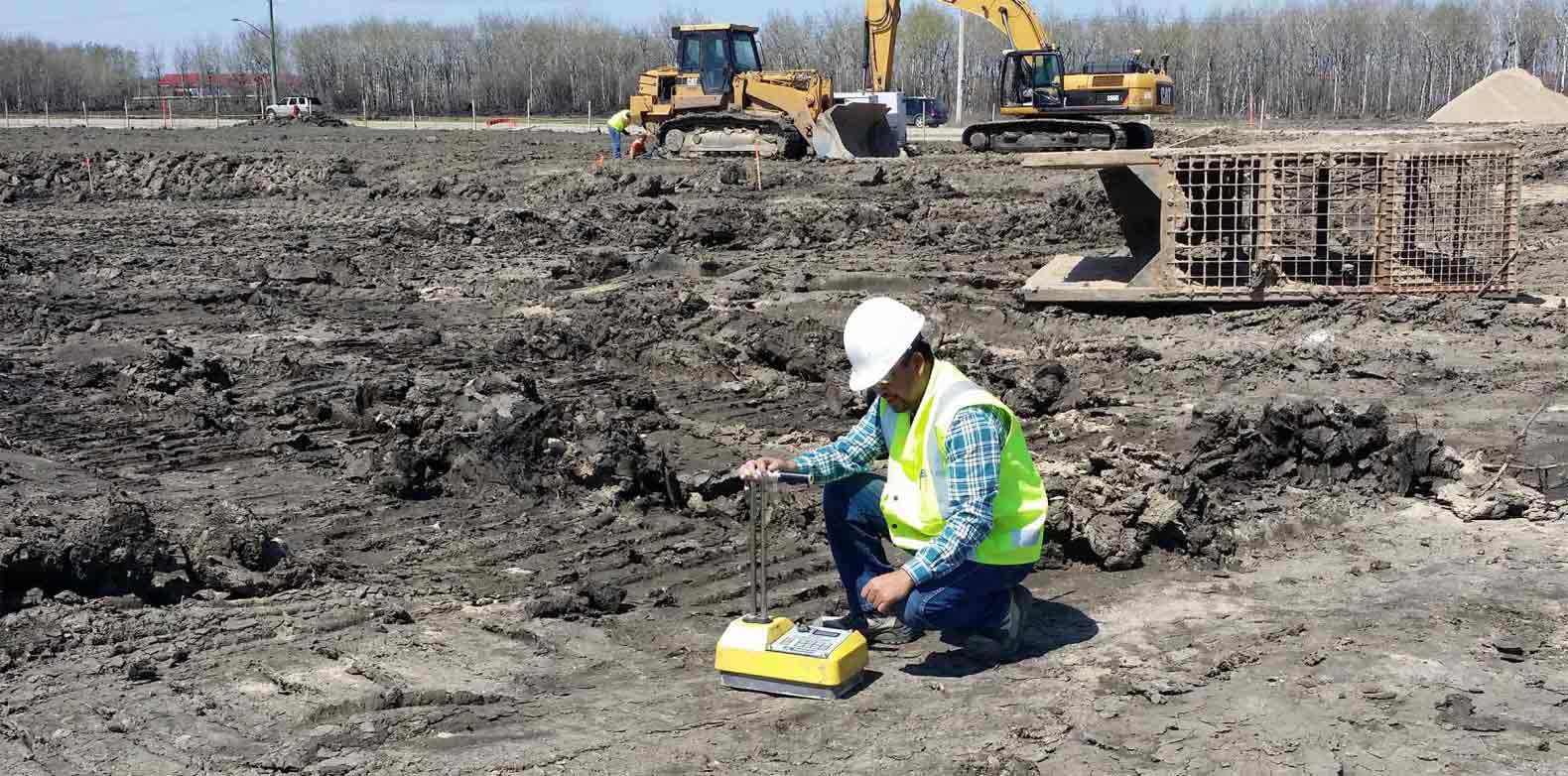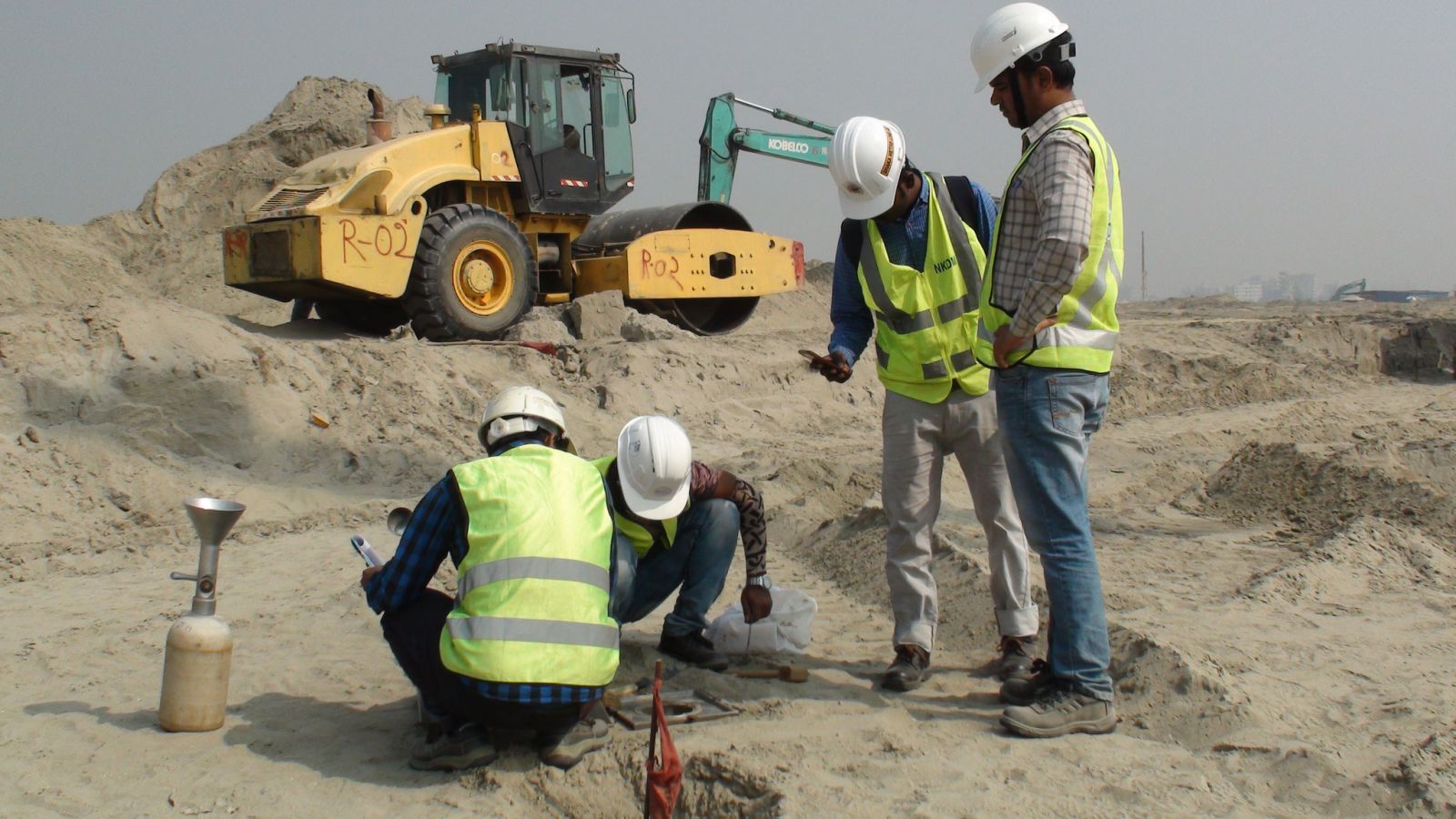The Role of an Engineer of Record in Ensuring Structural Integrity and Compliance
The Role of an Engineer of Record in Ensuring Structural Integrity and Compliance
Blog Article
Exploring the Innovative Strategies and Technologies Shaping the Future of the Geotechnical Industry for Sustainable Design Solutions
The geotechnical market is undergoing a transformative shift, driven by ingenious strategies and technologies that emphasize sustainable design services. Advanced soil stabilization methods, using wise products, and the application of data analytics are redefining exactly how we approach infrastructure obstacles. As these improvements promote eco-friendly stewardship, they additionally increase important concerns concerning their practical implementation and long-lasting performance. Understanding the interaction in between these innovations and their potential to transform the field welcomes additional expedition right into the future of lasting design practices.
Advanced Soil Stablizing Techniques
Dirt stablizing is an important process in geotechnical engineering, intended at boosting the physical homes of soil to improve its load-bearing capability and durability. Advanced dirt stablizing techniques play a crucial duty in attending to obstacles related to unstable or weak dirts, therefore allowing risk-free and reliable building and construction practices.
Among the prominent techniques, chemical stabilization involves making use of additives such as lime, concrete, or fly ash, which respond with soil particles to develop a much more natural mass. This method is especially efficient in boosting the toughness and moisture resistance of extensive clay soils. Mechanical stabilization, on the various other hand, involves the physical modification of soil properties via compaction or the unification of granular materials, resulting in boosted density and security.
One more innovative method is making use of geosynthetics, which give reinforcement and lower soil disintegration while boosting water drainage. Techniques like soil blending and deep dirt stablizing are additionally getting traction, enabling in-situ therapy of troublesome dirts. Collectively, these innovative methods not just boost the efficiency of dirt frameworks but also add to lasting design techniques by lessening the need for substantial excavation and material transportation.
Smart Products in Geotechnics
Innovation is at the forefront of geotechnical engineering, specifically with the unification of wise materials that improve the efficiency and performance of soil frameworks. Smart products, such as shape memory alloys, piezoelectric materials, and self-healing polymers, are revolutionizing the means engineers come close to soil stablizing and facilities durability (consulting engineer). These materials can adjust to transforming environmental conditions, react to anxiety, and also fix themselves, considerably improving the resilience of geotechnical systems
As an example, piezoelectric materials can create electric charges in action to mechanical stress, providing potential for real-time surveillance of dirt conditions and architectural integrity. Similarly, self-healing products can autonomously fix problems and cracks, decreasing upkeep expenses and extending the lifespan of geotechnical possessions. The assimilation of these wise materials not just improves the mechanical properties of dirt however likewise contributes to lasting engineering techniques by minimizing resource usage and ecological influence.
As the geotechnical industry remains to progress, the adoption of smart products will play a vital duty in developing cutting-edge services, guaranteeing that infrastructures are not just durable but additionally adaptable to future difficulties. This transformative approach is poised to redefine the requirements of safety and security and performance in geotechnical engineering.
Data Analytics for Facilities
The integration of clever materials in geotechnical design has paved the method for innovative methods, specifically in the world of information analytics for facilities. This innovative strategy leverages comprehensive information collection and logical strategies to boost decision-making procedures throughout the framework lifecycle. By using sensing units installed in clever materials, designers can constantly keep track of vital specifications such as soil security, dampness levels, and architectural honesty.
Data analytics allows the transformation of raw information right into workable insights, permitting anticipating maintenance and enhanced danger monitoring. Advanced algorithms and machine knowing strategies promote the recognition of anomalies and patterns, which can enhance and inform prompt treatments source allocation. Additionally, integrating geographic details systems (GIS) improves spatial evaluation, additional enhancing the decision-making framework.
By using the power of information analytics, the geotechnical sector is placed to not just enhance existing methods however also pioneer innovative options for future infrastructure difficulties. This harmony of technology and engineering concepts will certainly define the future of lasting facilities growth.

Lasting Ground Improvement Methods
Numerous lasting ground improvement techniques are becoming essential services to attend to the challenges of geotechnical design while minimizing ecological impact. These methods not just enhance dirt performance however likewise advertise environmental stewardship by decreasing reliance on typical, much more invasive techniques.

An additional innovative technique is the application of geosynthetics, that includes naturally degradable products that enhance soil while advertising drainage and disintegration control - tailings engineer. This lowers the need for hefty machinery and lessens site disturbance, hence protecting local ecosystems
Furthermore, methods such as dynamic compaction and vibro-replacement have advanced to consist of sustainable practices, decreasing and incorporating recycled materials carbon footprints. These approaches exhibit the industry's shift towards more ecologically accountable services, making certain that ground enhancement not only satisfies design needs yet additionally contributes favorably to the surrounding atmosphere.
Advancements in Environmental Surveillance
In current years, innovations in ecological surveillance have significantly boosted the capability to analyze and manage geotechnical jobs with very little environmental disruption. Innovative innovations, such as remote noticing, Web of Things (IoT) gadgets, and real-time data analytics, are changing how environmental impacts are gauged and mitigated.
Remote sensing technologies, including satellite imagery and air-borne LiDAR, promote the rapid evaluation of land usage modifications and environmental conditions - geotechnical engineers. These tools enable for continuous surveillance of sites, enabling designers to recognize possible issues prior to they rise. Furthermore, IoT devices, furnished with sensors for parameters like soil moisture, temperature level, and gas emissions, provide online data streams that boost the understanding of site-specific ecological variables
Real-time data you can try here analytics further improve decision-making processes by incorporating information from numerous sources, enabling for aggressive administration techniques. This holistic strategy not just makes sure compliance with environmental regulations yet likewise advertises sustainable practices within the geotechnical sector.
As these advancements remain to develop, they hold the possible to connect the void between engineering purposes and environmental stewardship, promoting an extra sustainable future for geotechnical jobs worldwide.
Verdict
Finally, the geotechnical industry is going through a transformative advancement driven by ingenious methods and technologies that prioritize sustainability. Advanced dirt stabilization methods, the combination of clever materials, and the application of information analytics jointly enhance the durability and efficiency of facilities. Furthermore, sustainable ground renovation techniques and technologies in environmental tracking underscore the industry's commitment to environmental stewardship. These developments not just address contemporary engineering challenges but additionally lead the way for a more lasting future in geotechnical techniques.
Techniques like dirt mixing and deep dirt stabilization are additionally getting grip, allowing for in-situ therapy of troublesome soils. Collectively, these sophisticated methods not just enhance the performance of dirt structures yet additionally contribute to lasting engineering techniques by lessening the need for considerable excavation and product transport.

Report this page